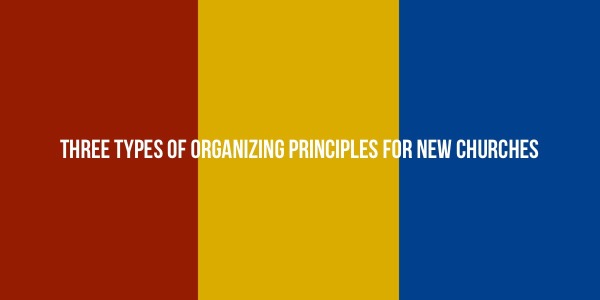Sociologists say that people group themselves together in three ways:
- Affinity— Similar ethnic, socioeconomic, education, language, etc. background
- Kinship— Extended family, tribe, band, tight-knit relationships.
- Geography— Same neighborhood, block, apartment complex, etc.
These same categories also function as organizing principles for people who start various kinds of churches.
Affinity
For several decades, the predominant approach has been affinity. We have believed that the best way to evangelize and organize people is by connecting them around their similarities. This way of connecting people has not only worked for quickly growing, even generation specific, suburban churches, but also can be true of language churches among first-generation immigrants.
Advertising is easier for these kinds of churches because the people they are trying to reach can be identified as a “market segment” that may be attracted to the same promotions, themes, music and other stimuli. Thus, an attractional method of invitation often works for affinity-based groups. Language and culture festivals, activities and events carry similar weight for these types of groups.
Leaders of affinity-based churches are often apostolic, entrepreneurial type leaders.
Kinship
Other church starts organize around relationship. This is often, though not always true of churches that identify as house churches, organic churches, missional communities, or intentional communities of people who live together.
Close relationships allow for a different way of being a community, often leading to a higher degree of trust. For this reason, church planting among some of the least reached, most under-represented group in the kingdom of God is best done relationally. Though they do represent affinity groups, high trust relationships trump pure affinity for people whose cultural-religious backgrounds are adverse to the gospel. Disciple making movements are also highly relational and even familial.
These kinds of churches multiply best when they are team led by people who have a variety of gifts, including apostolic and pastoral.
Geography
The third organizing principle is geography. Often, geography based churches are affiliated with rural church planting. Remember the circuit rider model of starting churches?
However, it is also an urban phenomenon. Multi-ethnic churches have often become most effect as they reach all kinds of people who live and/or work in a dense local. Parish based models are gaining popularity. This classic approach is being re-invented by younger church planters who embrace, protect and respect diversity as one aspect of an emerging worldview. Geography based church planting begs a more in-depth theology of place and space.
The pastor and church planting team for these churches reimagine their roles as being pastor/chaplains to an entire community, and not just the people who attend the church.
Methodology, not Model
Thinking about organizing principles helps me to break free of the tension that exists between so-called “attractional” and “organic” models of church. These are simply methodologies that can be mixed and matched with a variety of church models.
Any of the above may be appropriate given a particular place, people, or leadership gifting. See if it is a helpful way of thinking for you.
“Let’s Plant a V3 Church in my Neighborhood”
Share on Facebook
Tweet This
Share this Post

